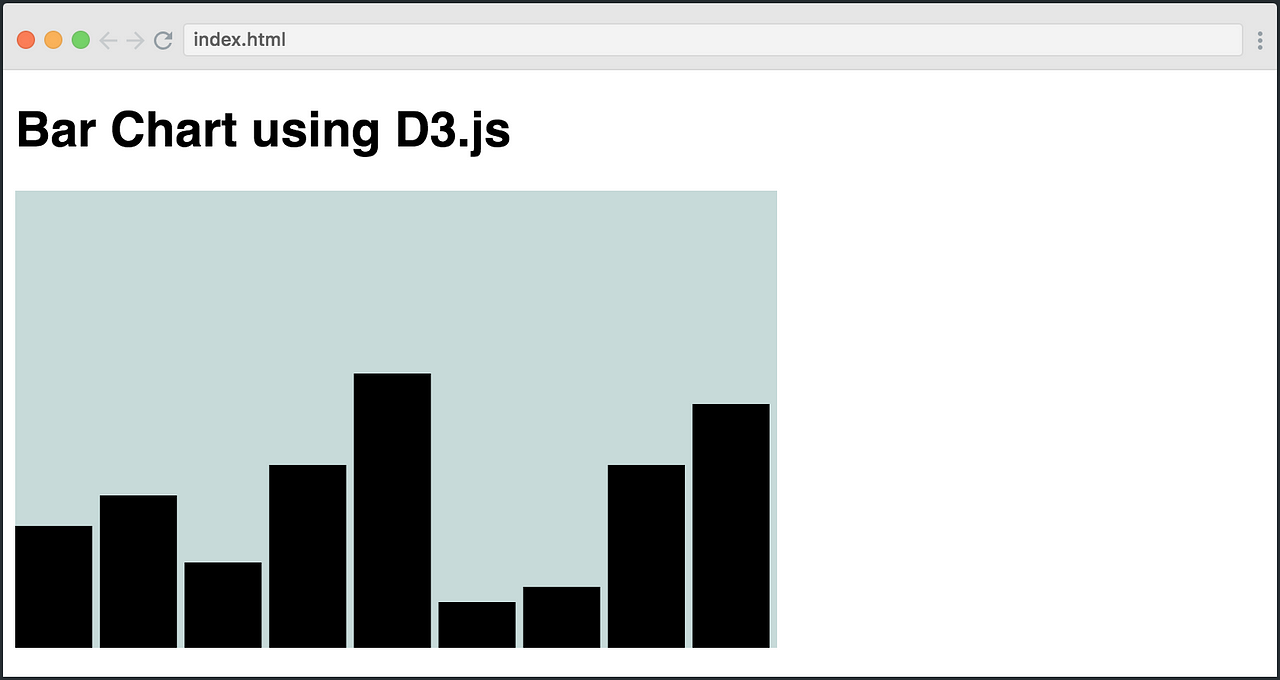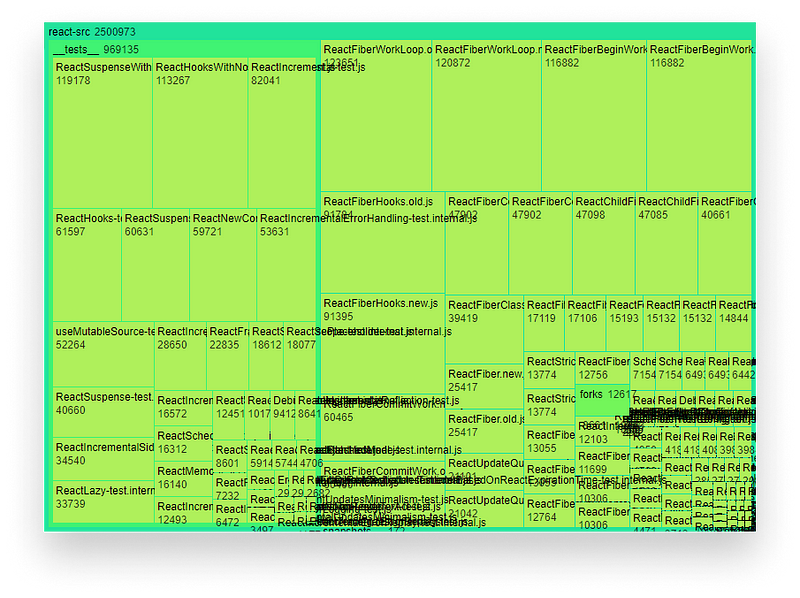43 data visualization with d3 add labels to d3 elements
Data visualization with D3.js for beginners - Medium A web based visualization library that features a plethora of APIs to handle the heavy lifting of creating advanced, dynamic and beautiful visualization content on the web. D3.js is a JavaScript library for manipulating documents based on data. D3.js helps you bring data to life using HTML, SVG, and CSS. Creating Data Visualizations with D3 and ReactJS - Codesphere Next, we are going to create a custom Bar Graph based on this data by creating a div for each element and dynamically setting the height. In our App.css, we are going to add two styles: One for the div containing the bar graph, and one for each individual bar. Now in our useEffect we are going to have D3 do the following animation.
D3 - A Beginner's Guide to Using D3 - MERIT 8) Draw the line -. Now that we have our axis down lets add a line to represent our values in data1. We begin by defining a variable/function line that will allow us to draw this line, we use the helper function d3.svg.line () to define our d attribute which we will need to actually store our datapoints.
Data visualization with d3 add labels to d3 elements
Using D3.js with React: A complete guide - LogRocket Blog First, we defined a variable, data, which contains the data we want to visualize. Next, we defined an SVG using D3.js methods. We're using SVG because it's scalable — that is, no matter how large the screen is or how much you zoom in to view the data, it will never appear pixelated. d3.select() is used to select an HTML element from the document. Creating Data Visualizations with D3 and ReactJS - Medium Let's go through each part of that D3 line on line 17 and breakdown what it does: d3.select ("#pgraphs") selects the div with the id "pgraphs" .selectAll ('p') tells d3 that we want to look at the... Introduction to Data Visualization with D3 - Chapter 1 - SitePoint This book follows the journey of a beginner learning the most popular tool, D3.js, a JavaScript library for visualizing data. D3 enables you to bring data to life—getting data from various sources,...
Data visualization with d3 add labels to d3 elements. How to add labels to my scatterplot from data using d3.js 1. In order to solve what I wanted to do, I just needed to do the following: using name: d.Name read the name column data and then in the final part: add. .append ("svg:title") .text (function (d) { return d.name}); after the styling component. That gets me to displaying names when I hover over the points. Share. Data Visualization with D3 · GitHub - Gist Data Visualization with D3 This file contains bidirectional Unicode text that may be interpreted or compiled differently than what appears below. To review, open the file in an editor that reveals hidden Unicode characters. Learn more about bidirectional Unicode characters Show hidden characters Add Labels to D3 Elements - Data Visualization with D3 - YouTube 12.5K subscribers Subscribe In this data visualization with D3 tutorial we add labels to D3 elements. This video constitutes one part of many where I cover the FreeCodeCamp ( )... D3 Tutorial for Data Visualization - Tom Ordonez Feb 02, 2020 · var w = 500; var h = 300; var barPadding = 3; var padding = 40; var svg = d3.select("body") .append("svg") .attr("width", w) .attr("height", h); var parseTime = d3.timeParse("%Y"); var rowConverter = function(d) { return { year: parseTime(d.year), population: +d.population } } d3.csv("file.csv", rowConverter).then(function(dataset) { xScale = d3.scaleBand() .domain(d3.range(dataset.length)) .rangeRound([padding, w]) .paddingInner(0.1) .paddingOuter(0.1); yScale = d3.scaleLinear() .domain([0 ...
Add Labels to D3 Elements - freeCodeCamp Add Labels to D3 Elements D3 lets you label a graph element, such as a bar, using the SVG text element. Like the rect element, a text element needs to have x and y attributes, to place it on the SVG canvas. It also needs to access the data to display those values. D3 gives you a high level of control over how you label your bars. D3.js Tutorial - Data Visualization for Beginners The d3.scale function takes in data as input and returns a visual value in pixels. d3.scale needs to be set with a domain and a range. The domain sets a LIMIT for the data we are trying to represent visually. const x_scale = d3.scaleLinear () .domain ( [10, 500]) .range ( [2000000, 16000000]); Let's break this down a bit: D3 for Data Scientists, Part II: How to translate data into graphics Next, selectAll('.date_label_top') creates a D3 selection containing all elements in the DOM (Document Object Model) with class ' date_label_top '. This probably seems odd, because we don't have any elements with class ' date_label_top '! That's ok, it just means our selection is empty. We'll add some elements to it soon. FCC-Projects/DataVisualizationWithD3.md at master - GitHub The first step is to make D3 aware of the data. The data () method is used on a selection of DOM elements to attach the data to those elements. The data set is passed as an argument to the method. A common workflow pattern is to create a new element in the document for each piece of data in the set. D3 has the enter () method for this purpose.
Creating Data Visualizations with D3 and ReactJS - DEV Community Let's go through each part of that D3 line on line 17 and breakdown what it does: d3.select ("#pgraphs") selects the div with the id "pgraphs" .selectAll ('p') tells d3 that we want to look at the p tags within that div. Since there are currently no p tags, we will later need to create them. .data (dataSet) binds that dataSet array to these p tags Use data attached to a visual element to affect its appearance | D3.js ... Adding a link to the D3 library; Adding antag and sizing it with D3; Creating some fake data for our app; Adding SVG circles and styling them; Creating a linear scale; Attaching data to visual elements; Use data attached to a visual element to affect its appearance; Creating a time scale; Parsing and formatting times; Setting dynamic domains freecodecamp-solutions/17-add-labels-to-d3-elements.html at master ... freecodecamp-solutions/Data Visualization Certification/Data Visualization with D3/17-add-labels-to-d3-elements.html Go to file yadavanuj1996 Start data visualization certification. Latest commit e5034e7 on Aug 1, 2019 History 1 contributor 35 lines (29 sloc) 827 Bytes Raw Blame Add Labels to Scatter Plot Circles - freeCodeCamp Data Visualization with D3 Add Labels to Scatter Plot Circles You can add text to create labels for the points in a scatter plot. The goal is to display the comma-separated values for the first ( x) and second ( y) fields of each item in dataset. The text nodes need x and y attributes to position it on the SVG canvas.
Getting Started with Data Visualization Using JavaScript and the D3 ... Introduction. D3.js, or D3, is a JavaScript library.Its name stands for Data-Driven Documents (3 "D"s), and it's known as an interactive and dynamic data visualization library for the web.. First released in February 2011, D3's version 4 was released in June 2016. At the time of writing, the latest stable release is version 4.4, and it is continuously being updated.
17 - Add Labels to D3 Elements - Data Visualization with D3 ... Let's add some labels to our bars. We can use the SVG text element to render text on an SVG canvas. We can give this x and y attributes to position it correctly. Once again, we can use a function...
An introduction to accessible data visualizations with D3.js Data visualizations can be great to communicate complex data in an easy way. Unfortunately, there's a lot that can go wrong when it comes to accessibility. ... Solution A: Add the labels and the ticks to the same element. ... and group the days and values inside one element. The way our D3 code is structured right now, this will be the output ...
Data Visualization with D3: Add a Hover Effect to a D3 Element Data Visualization with D3: Add a Hover Effect to a D3 Element. It's possible to add effects that highlight a bar when the user hovers over it with the mouse. So far, the styling for the rectangles is applied with the built-in D3 and SVG methods, but you can use CSS as well.
D3 Bar With Stacked Chart Labels D3 helps you bring data to life using HTML, SVG, and CSS Stacked Bar Chart with Legend, Text Labels and Tooltips - LICENSE attr (" width ", width A d3 selection that represents the container (s) where the chart (s) will be rendered One more code chunk is added for text labels One more code chunk is added for text labels.
How to Make Stunning Data Visualizations With D3.js - Medium data returned from d3.nest().key(d => d.height).entries(root.descendants()), 4 groups. We then need to call join to update the elements to match the data that was previously bound by data. Then we want to bind data once more. In order to do that, we have to call selectAll again. But this time, we will use the values returned by the previous ...
Customize your graph visualization with D3 & KeyLines Adding link labels with D3 With D3 you need to append a new text element to links, but you can't just append a g element to group line and text, the way we did with nodes. Link lines positioning require two points coordinates (x1,y1 and x2,y2) while groups have no coordinates at all and their positioning needs a translation in space.





Post a Comment for "43 data visualization with d3 add labels to d3 elements"